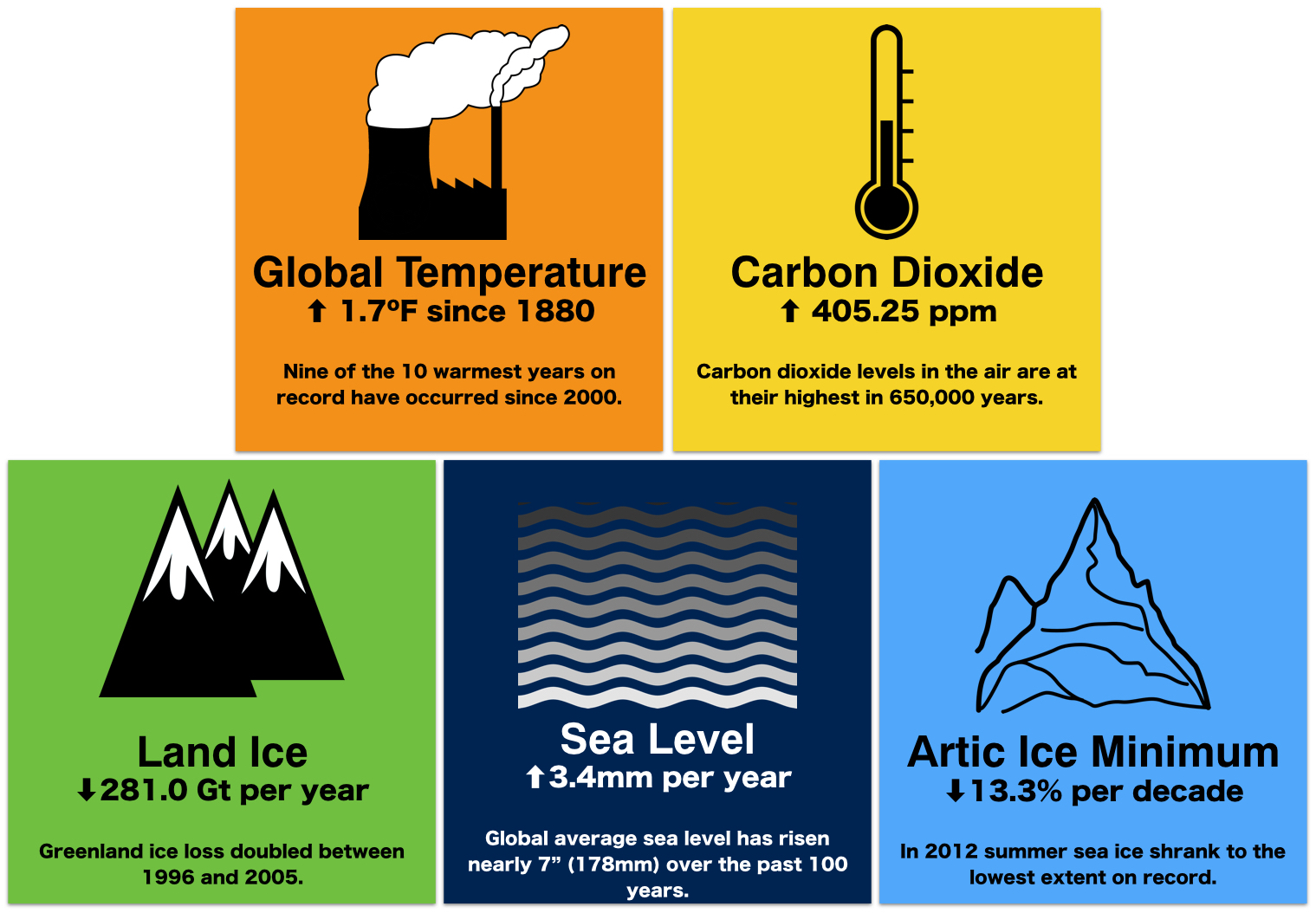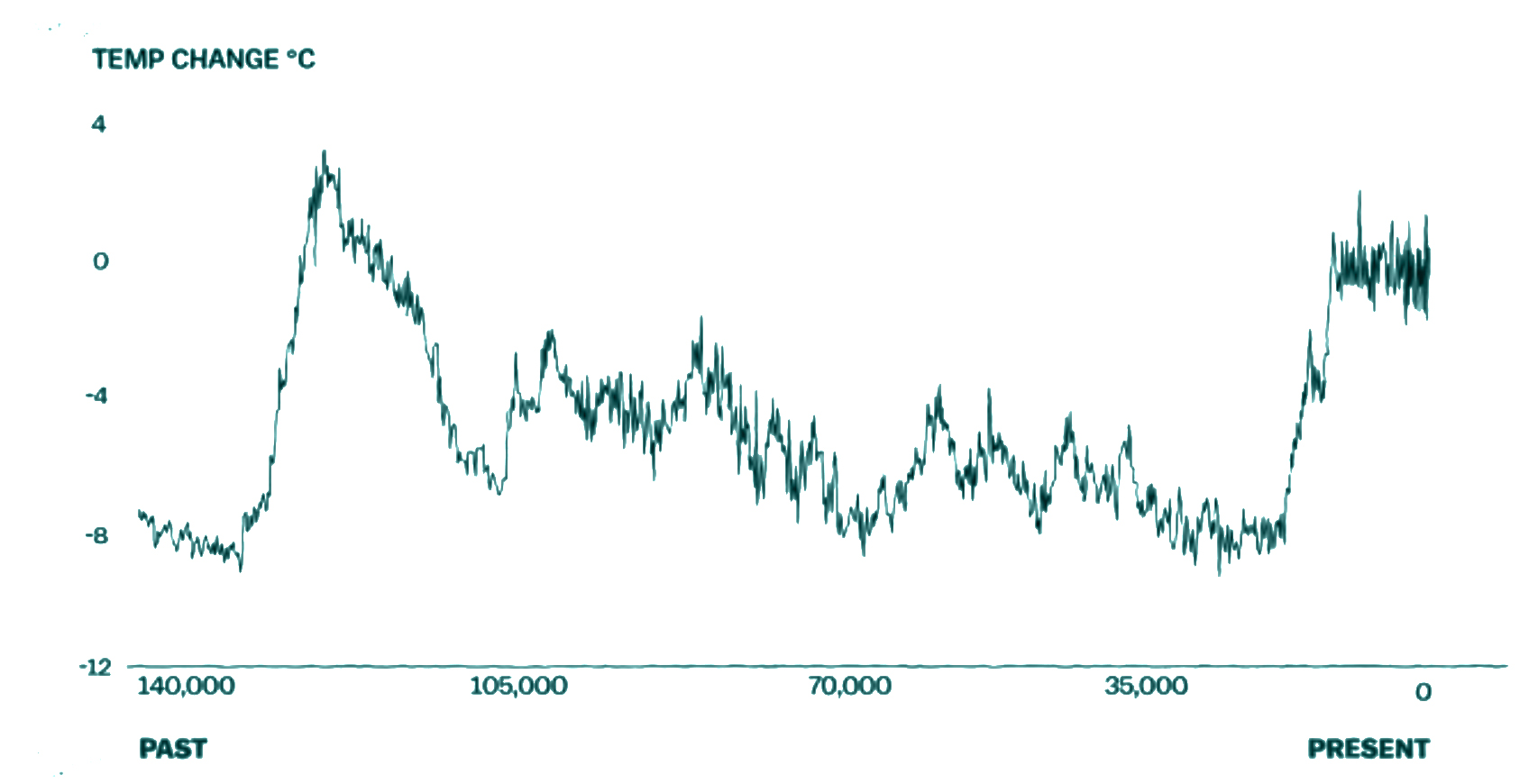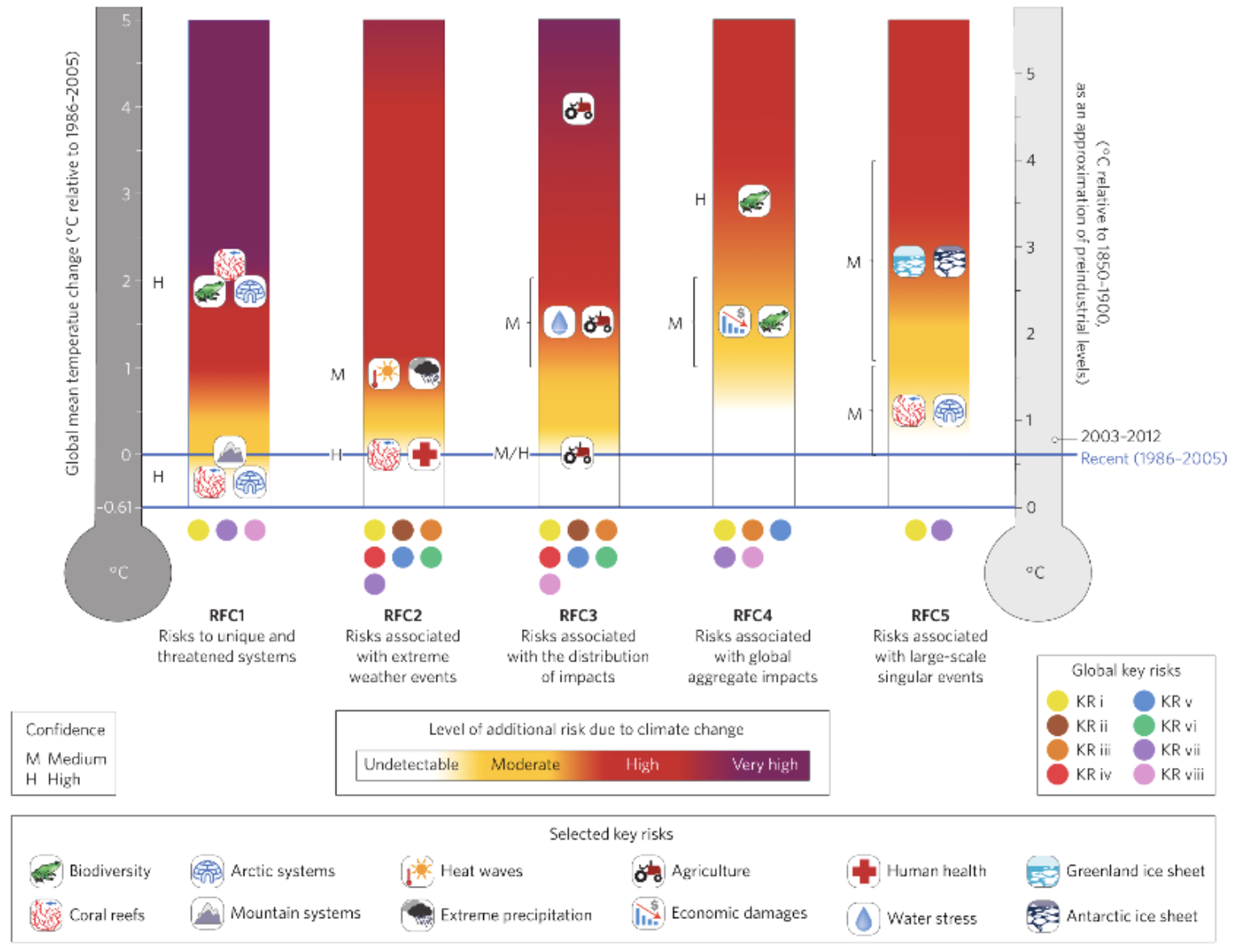Over the past century, the scientific community has documented dramatic shifts in global temperatures, the rise of extreme weather patterns and the on-going deterioration of the ozone layer. Most recently, scientists identified signs of the effect of human urbanization in the evolution of organisms. For example, seeds in urban areas are heavier than the same species of seeds in rural areas. Since seeds are carried by the wind, the heavier seeds are more likely to fall in close by soil, instead of on concrete. This is being interpreted as clear evidence of mankind’s influence on the planet, thereby heralding the emergence of a new geological age – the Anthropocene.
 Source: NASA (2016)
Source: NASA (2016)
The world’s climate is changing and this phenomenon has become one of the greatest challenges of our times. The Earth has experienced drastic temperature shifts over the past 4.5 billion years: 65 million years ago crocodiles swam above the Arctic Circle and just under 20,000 years ago multi-meter-thick glaciers covered Canada. In some cases the drastic changes in climate even caused mass extinction, and yet life persisted. Man evolved from primates, mammals and reptiles, standing up and walking out of Africa to eventually reach every corner of the world.
Global Temperature Change in Years
 Source: NASA (2016)
Source: NASA (2016)
Comparatively speaking the last 12,000 years has been remarkably stable, creating the optimal climatic conditions for human civilizations to develop. Reliable seasons fed more and more people. Knowledge spread and science was born. Eventually we created machines that unleashed unprecedented growth, requiring massive amounts of fuel found in the form of ancient forests buried deep underground and compacted over 300 million years. The release of so much carbon into the atmosphere from the burning of fossil fuels is what came to disrupt the climatic stability that enabled our evolution. After 10,000 years of temperatures that varied within 1ºC, we are now on track for a change of at least 3ºC of warming by the end of the century if we do not take action.
The unprecedented burning of fossil fuels and drastic changes in land use has caused the Earth to warm at rate not seen for 66 millions of years. Higher temperatures, rising sea levels, heat waves, droughts and floods threaten to make many of our habitats and infrastructures obsolete. Each year the shift in our climate leads to the loss of 46,000 square miles of forests, 12 million hectares of arable land and 10,000 species. Current climate, energy and biodiversity commitments are clearly not sufficient to handle the magnitude of the problems, however promising the recent global summits in Paris, Marrakesh as well as in Johannesburg may seem.
All Climate Impacts in One Single Chart
 Source: Nature (2016)
Source: Nature (2016)
The risks and impacts of climate change are so profound that they are often difficult to communicate. The truth is that there is no single risk, but rather a variety of impacts and consequences that range in severity and scale, affecting several systems and occurring in different timelines. Mankind has existed for 200,000 years (0.004% of Earth’s history). We have had agriculture for 5% of that time and electricity for 0.07%. Climate shifts are well known and documented in the history of the world, but civilization and mankind’s influence is not. Slowing down climate change is not only about saving the planet, but it is also about protecting ourselves from a level of climate disruption that human civilization has never before experienced.
Neem is one solution. The very nature of this evergreen makes the tree ideal for reforestation and carbon sequestration efforts. Fast growing, with a large surface biomass and thick foliage, neem has an impressive capacity to capture carbon in the atmosphere with a sequestration capacity of 12.27 tons per tree per year. One of the most resilient, hard wearing and durable timbers on the planet, with a lifespan of up to 200 years, neem is an obvious choice for protecting and restoring the environment through long term carbon entrapment.